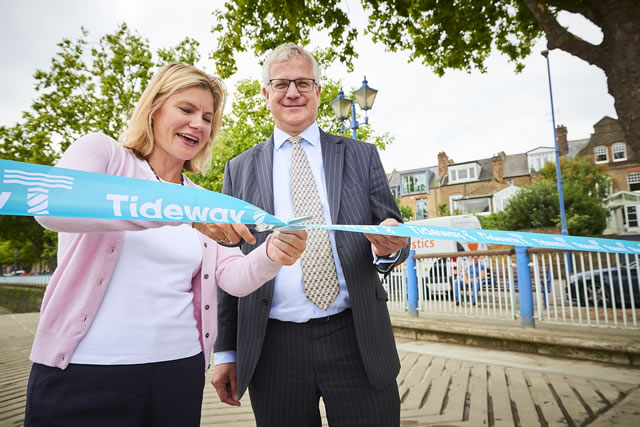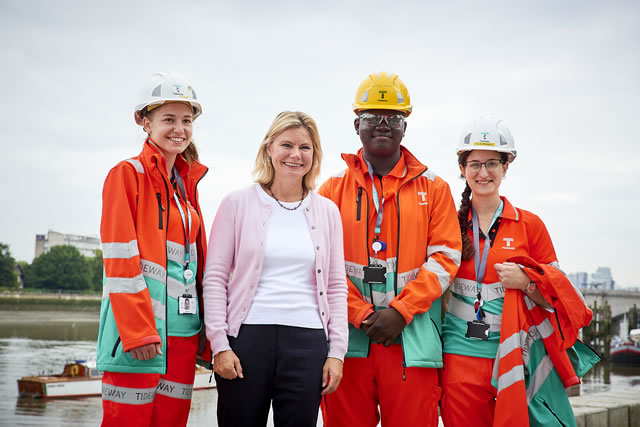MP Opens Temporary Slipway
Tideway ensures residents maintain access to river ahead of major Super Sewer works

Justine Greening MP and Mark Sneesby, Tideway’s Chief Operating Officer, cut the ribbon at the new Putney slipway
As the Water Rat in The Wind in the Willows once said, ‘there is nothing half so much worth doing as simply messing about in boats.’ Bearing this in mind, Tideway, the organisation delivering the Thames Tideway Tunnel – a major expansion of London’s sewage network needed to protect the Thames from pollution, understands the importance of keeping the River Thames open to everyone.
That is why a temporary slipway was officially opened this week to maintain access for river users at Putney, ahead of major works to construct the 25km tunnel that will run under the river bed from west to east London.
Dubbed the ‘super sewer’, Tideway’s scheme will stop millions of tonnes of wastewater spewing into the river, protecting one of London’s greatest natural assets. It will modernise the capital’s ageing sewage system, originally built by the Victorians and provide additional capacity for London to continue to grow and prosper.
The new slipway, an access point for boats to moor on the river, has been built due to the necessary closure of the existing slipway whilst the tunnel is built. When the original slipway is reopened, it will be alongside a whole new piece of embankment which will offer a new public space for Putney.
Justine Greening, MP for Putney, cut the ribbon to mark the official opening on Tuesday (22 August). She said:
“Access to the river is a vital part of the community in Putney and I am really pleased to see the new slipway open during the summer, when the river becomes an extended playground for the area. The Thames Tideway Tunnel is an essential infrastructure project for London, and will have a hugely positive impact on the river’s health and quality.
She continued:
“As it enters its main construction phase, it’s very welcome that Tideway is engaging with the local community and keeping disruption to a minimum whilst this vital work takes place.”
Ben Green, Tideway delivery manager, said:
“The temporary slipway is an important milestone for us as it allows us to prepare the site for the main work that needs to be done to connect the tunnel to one of the most polluting discharge points under Putney Bridge.
“It’s simply wrong that in this day and age, an average 68,000 tonnes of sewage pours out of the two gates under the bridge, polluting the river just yards upstream from one of the busiest stretches of water for rowing in Britain.”
The main works at Putney Embankment started at the end of July. Once complete, sewage overflowing into the river under Putney Bridge will be captured down a 36m deep shaft in the foreshore. From there, a 48m long connection tunnel will take sewage to the main tunnel and transfer it to east London for treatment.
The existing Victorian sewer network was designed to cope with a city of four million people but the population in London is now at more than nine million and growing. The new super sewer will provide the capacity the city needs for more than 100 years.
Construction of the tunnel is being completed in three parts; west, east and central. The tunnel is expected to be finished by 2024.
 Justine Greening MP meets Tideway apprentices working on the west section of the Thames Tideway Tunnel
Justine Greening MP meets Tideway apprentices working on the west section of the Thames Tideway Tunnel
August 24, 2017